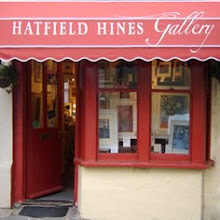 This week, the on-the-road Ben Nicholson retrospective 'A Continuous Line' rolls into St. Ives for spring stabling at the Tate.
This week, the on-the-road Ben Nicholson retrospective 'A Continuous Line' rolls into St. Ives for spring stabling at the Tate.The exhibition - the first major UK presentation of Nicholson's work for over fourteen years - reconsiders the artist's position in British art history and offers a new understanding of the modern in art, particularly in relation to national and local identities.
 Son of the celebrated Edwardian painter William Nicholson, and partner of sculptor Barbara Hepworth, Ben Nicholson (1894-1982), became one of the most radical British artists of the twentieth century. He made his reputation by absorbing what was essentially a European abstraction – influenced by artists such as Piet Mondrian and Naum Gabo – into English art.
Son of the celebrated Edwardian painter William Nicholson, and partner of sculptor Barbara Hepworth, Ben Nicholson (1894-1982), became one of the most radical British artists of the twentieth century. He made his reputation by absorbing what was essentially a European abstraction – influenced by artists such as Piet Mondrian and Naum Gabo – into English art.His anglicised version of abstraction concerned itself with throwing-off the constraints and dark palette of 19th-century academic painting. This was no doubt, partly a reaction against the Edwardian art of his father's generation - but also an expression of his own Christian Science beliefs – the mind, body, spirit philosophy of his day.
 The high point of his artistic career were his white reliefs, first produced in 1934 and continued into the Forties. Emptied of all extraneous detail and colour, their whiteness stood for what was pure, modern and spiritual. This simplicity was key to Nicholson. In a period of political turmoil, these works offered a new way of thinking about the world and Englishness.
The high point of his artistic career were his white reliefs, first produced in 1934 and continued into the Forties. Emptied of all extraneous detail and colour, their whiteness stood for what was pure, modern and spiritual. This simplicity was key to Nicholson. In a period of political turmoil, these works offered a new way of thinking about the world and Englishness. Focusing on Nicholson's English years, the exhibition divides into three sections: Landscapes of the late 1920s; Abstract & landscape works made in St. Ives during World War II and the Cubist still-lifes made between 1945-58, the latter two influenced by his relationship by Hepworth. Each section draws on a selection of key works to demonstrate Nicholson's continuity of vision and approach.
Focusing on Nicholson's English years, the exhibition divides into three sections: Landscapes of the late 1920s; Abstract & landscape works made in St. Ives during World War II and the Cubist still-lifes made between 1945-58, the latter two influenced by his relationship by Hepworth. Each section draws on a selection of key works to demonstrate Nicholson's continuity of vision and approach.A Continuous Line at Tate St. Ives runs until 4th May 2009.
Click Here for tickets, room guide, chronology, special events and to access a downloadable MP4 walking tour of the exhibition, playable via ipod.







No comments:
Post a Comment